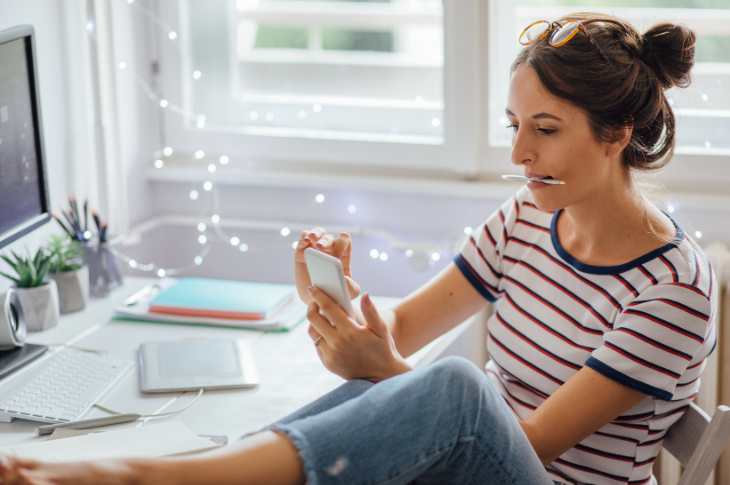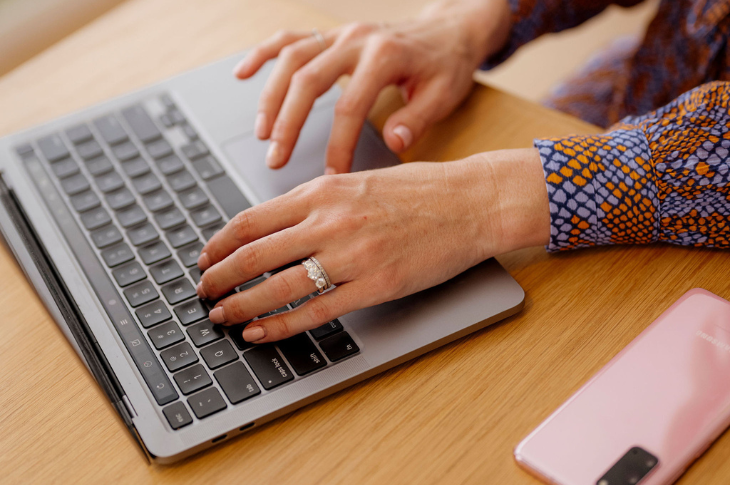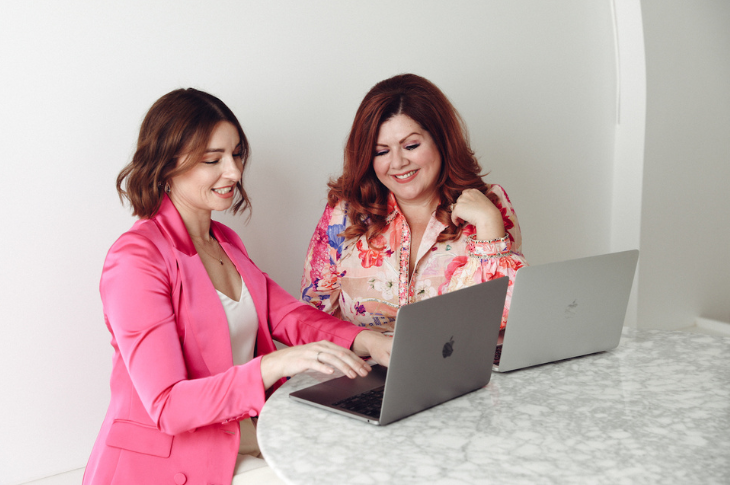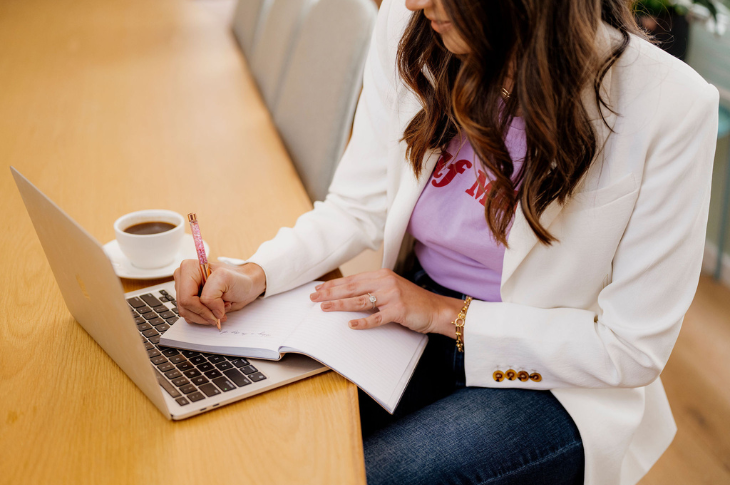How COVID-19 changed the female freelancing landscape in 2020
We asked over 250 Australian women and businesses how the pandemic impacted their work this year, and here’s what they told us…

With COVID-19 upending our desks, reshuffling our schedules and adding the word ‘pivot’ into daily vernacular, it’s unsurprising the future of work for women has changed forever. It seems there’s nothing like a pandemic to make women across all industries and backgrounds ditch their 9 to 5 in favour of the gig economy. But it’s not just career women making the switch, with employers increasingly moving toward a freelance-forward workplace, too.
So has COVID changed the way we work forever? From the common challenges freelancers continue to face to the surprising motivations behind making the switch, we surveyed over 250 women and businesses to find the answers.
What does the modern freelancer look like post-COVID?
Gone are the days when a ‘freelancer’ was a pony-tailed web-developer named Rob. The face of freelancing is changing, with women well and truly at the helm. So who’s on board?
Well, the majority of freelancers are aged around 25 to 44 – enough time to get established in their industry and begin pursuing a career that marries their passion and skills with their lifestyle. Sydney and Melbourne have long been heralded the ‘freelancing hubs’ of Australia, and that’s also reflected in our findings, with 90% of surveyed freelancers located across the eastern seaboard. Oh, and 21% may be single, but over half of freelancers are partnered, proving the side hustle life isn’t just for the millennial digital nomad.
These women are wives, girlfriends, sisters, mothers and among them? Are the quarter of women dreaming of the freelance life, the 19% side-hustling and the 28% who’ve made it their full-time gig as a sole trader. Incredibly for many, they’ve been living this life for less than a year, with just 19% established for over five years. It’s not surprising when many ladies shared the same sentiments around COVID’s impact on their careers. One freelancer shared, “I have always worked full-time and due to COVID was made redundant, (so I’m) now freelancing” while another said she was “recently made redundant” so fell into freelancing to maintain her income. The pandemic has also meant 80% of these women have left behind the shiny offices filled with hundreds of colleagues to work solo, with just 1 in 10 backed by a small team. So what is the appeal of the freelance life?
What inspired women to freelance, consult or side-hustle in 2020?
Leaving behind the security of a full-time job may seem intimidating for some, but freelancers, consultants, side-hustlers and sole-traders are the go-getters who just ‘went for it’. What made them take the leap?
Unsurprisingly the employment fallout from the pandemic was among the top reasons for moving into freelancing, with some ladies admitting, “COVID struck and we needed to think fast”. For others, it was the control and autonomy of working for themselves that made freelancing alluring, while 66% said the flexibility was a big factor. Every day being different was a perk for over one-quarter of freelancers, while the money posed a significant consideration for 38% of ‘honeys’. Obvious reasons aside, one freelancer shared her wanderlust was the biggest motivator: “I wanted freedom to work on the road when my husband and I travel Australia”, while another was undeniably multi-passionate and felt she couldn’t combine roles in the corporate world.
It’s not just COVID or a desire for adventure that makes joining the gig economy a dream for skilled-up women. The rise in freelancing has been compounded by mounting evidence the 40-hour workweek is ‘dead’, with experts claiming lack of flexibility, non-existent work-life balance, and a dispersed team demands a new face of work. Studies have even revealed these long working hours adversely affect employee health, happiness and productivity, so it’s no wonder these ladies cited lifestyle-friendly work as among the main motivations for freelancing.
What was the most challenging part of being a freelancer during COVID?
For all its freedom, flexibility and versatility, it’s not all smooth sailing in the gig economy. So what is the reality for our female side-hustlers, consultants and sole-traders?
While there was the lucky three per cent who said their freelance journey had been all positive during COVID (and we’d love to know who you are!), a quarter of our ladies shared their biggest challenges were knowing how to get started. Finding new work was a struggle for almost 50% while knowing how and what to charge, and nailing their growth strategy was difficult for around 25% respectively. Some brave women shared how “fear of failure”, “lack of confidence” and “imposter syndrome” impacted them throughout the pandemic, with these sentiments echoed across much of our findings. Navigating self-promotion and isolation were also common threads sewing our community together.
But of course, these challenges can’t dull the undeniable positives of freelancing for women. Flexibility, complete creative direction and freedom to work anywhere were among the most sparkling aspects of the job. Meanwhile, doing it for yourself, pursuing (and achieving) personal goals and being boss-free makes it all worthwhile for many.
The biggest industries for freelancing, consulting and side-hustling in 2021
Just like our freelancers, side-hustlers, consultants and sole-traders, some industries are thriving in this new era, while others are struggling. So what’s hot and what’s not for outsourcing?
It’s unsurprising creatives take the cake (and the brief) when it comes to freelancing and consulting. Those in Marketing make up almost half of all freelancers, while women in Design, the Creative Industries and Professional Services make up a collective 22% of the market. Additionally, among the 86% of employers who said they were eager to hire a freelancer in the coming year, these were the top industries, with 57% seeking a marketing freelancer and a further 15% needing specialists in professional services. Interestingly, demand for these professions isn’t expected to slow down any time soon, with our findings echoed in predictions the creative industries will grow 14.3% annually between now and 2026. With that, 52% of employers shared they’re reconsidering the need for full-time staff completely, indicating in the wake of the pandemic, contract-based, flexible work from freelancers and consultants is more appealing.
How do employers want to work with freelancers?
Day-rate? Project-based? Retainer? As more employers make the switch to freelancers, how do they want to work with them?
We know the future of work is female, and so do many employers with the overwhelming majority sharing they supported a ‘Women at Work’ diversity program. What’s less clear was how they handled the subject of price, since it’s complicated territory at the best of times, let alone during COVID-19 with stringent budgets and deadlines. But for employers, they like to keep it simple. Forty-seven percent shared an hourly or project basis was the most appealing way to engage a freelancer, while just 10% would opt for a day rate. Interestingly, despite the obvious security it brings for a side-hustler or consultant, retainers were a no-go for the businesses we surveyed. Either way, it’s clear freelancers are becoming the go-to for many employers who want the strong skillset a full-time employee brings, minus the strings attached.
The modern freelancer, consultant, side-hustler and sole-trader is driven, multi-passionate and unique. But most of all, she’s female. If our 2020 survey results have shown us anything, it’s that no matter her motivations, her industry, her skillset or the curveballs she’s had to navigate, freelancing was the way forward for so many women during COVID. For these ladies and employers alike, the pandemic was the push they needed to enter the gig economy, embrace the strategic advantages it brings and make space for more women at the (virtual) table in 2021.
So how did COVID-19 shape your 2020?
About the author
Sarah is a freelance writer currently in her final year of a Public Relations and Communications degree. When she’s not buried in a textbook or deep in SEO research, she’s searching for the best iced long black (with a dash of pouring cream), climbing a mountain or laying by the beach with the latest edition of Vogue in hand.




